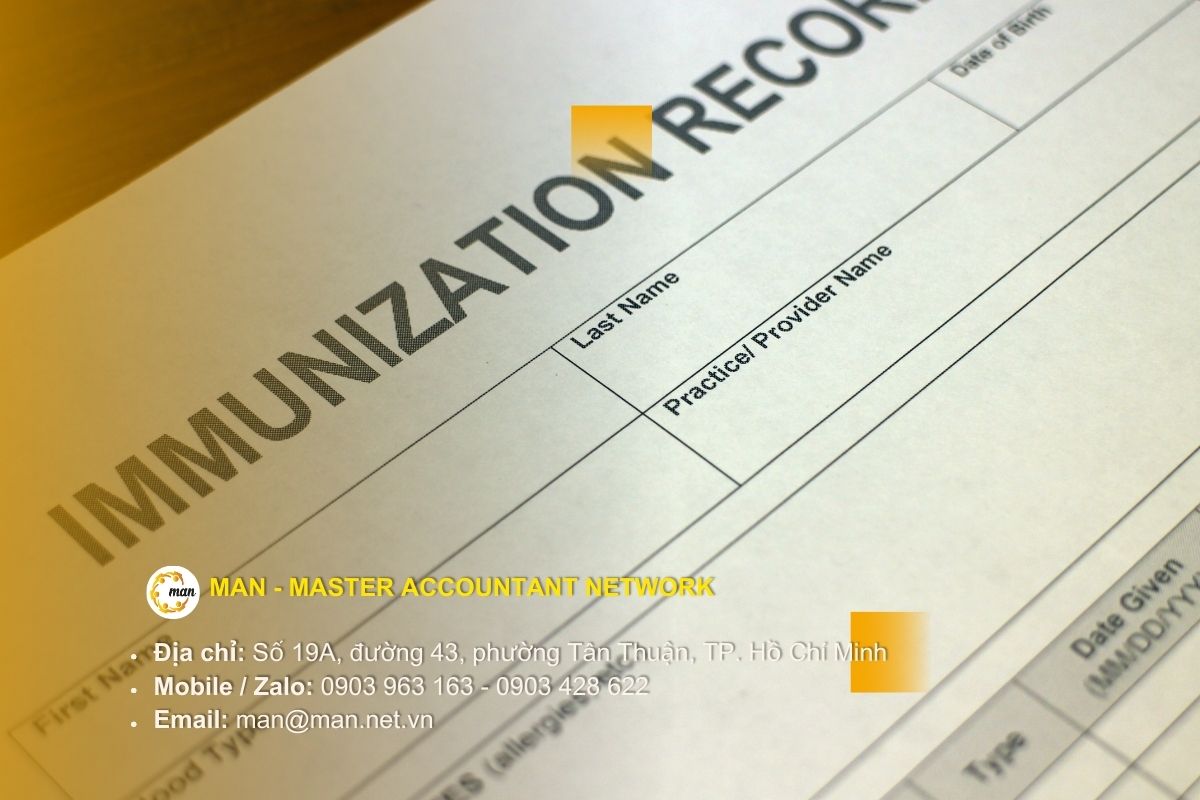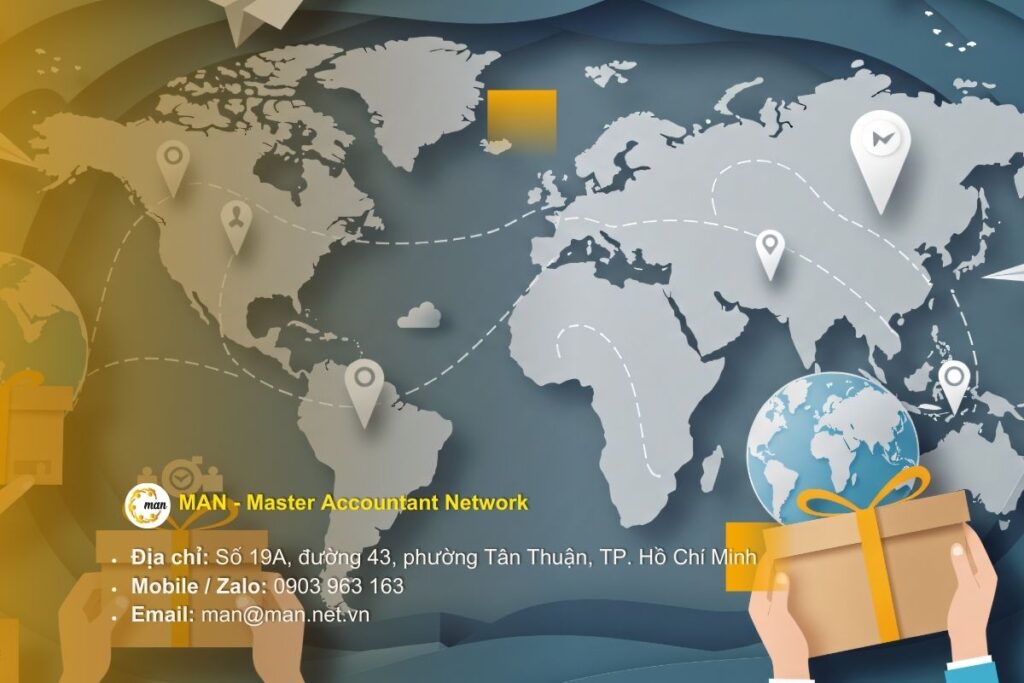Protecting related party transaction records is a key step to help businesses ensure compliance with Vietnamese tax laws on transfer pricing, while ensuring transparency in intercompany transactions and minimizing the risk of tax collection. Through internal control of transaction records and archiving records according to legal standards, businesses can effectively manage documents from Local File arrive Master File and cross-border profit reporting, creating a solid foundation for intercompany transaction transparency.
Concept and role of protecting related transaction records
What is Affiliate Transaction Record Protection?
Protect your records affiliate transactions is the process by which a business establishes, stores and manages a system of records related to transactions between companies in the group, to ensure transparency and compliance with the law. According to Vietnamese tax law and OECD standards, protecting records not only helps to prove the correct market price according to the arm's length principle, but also provides a legal basis when tax authorities examine inter-company transactions.
This activity plays an important role in:
Ensure transparency of inter-company transactions, making it easy for tax authorities and internal management to monitor.
Support businesses in proving the reasonableness of related-party transactions, avoiding risks of disputes or tax arrears.
Role for business
For businesses, protecting related transaction records brings many practical benefits:
Support businesses to comply with Vietnamese tax laws and international standards, creating transparency in inter-company transaction management.
Minimize the risk of over-collection or profit adjustments due to incomplete records.
Strengthen internal control of transaction records and record keeping according to legal standards, as a basis for internal reports and tax inspections.
We can see through an illustrative example such as a multinational corporation when being inspected in Vietnam thanks to its complete and transparent related party transaction records, it avoided being charged 1 million USD, and at the same time proved that the valuation method applying the arm's length principle is reasonable.
Content of the file to be protected

Transfer pricing documents and related reports
To effectively protect related party transaction records, enterprises need to fully prepare transfer pricing records and related reports. The main records include:
Master File, Local File, IGF: Provide overall information on corporate structure, subsidiaries and transfer pricing strategies.
Transfer pricing documentation: Demonstration of the arm's length principle pricing method.
Related party transaction appendix (GDLK 01): Includes a list of transactions, values and valuation methods.
Managing these records according to standard procedures helps optimize transfer pricing record protection and record keeping according to legal standards.
Business information and transfer pricing strategy
In addition to transfer pricing documents, businesses need to provide general information about:
Corporate structure, ownership structure, subsidiaries: Including domestic and foreign branches, helping tax authorities understand the organization's operations.
Transfer pricing strategy, valuation method: Helps demonstrate transactions are made at market prices and reduces the risk of tax arrears.
Example illustrating hypothetical figures: Global revenue of 1 billion USD, pre-tax profit of 120 million USD, creating a basis for assessing the reasonableness of profit allocation among subsidiaries.
Cross-border affiliate trading
Cross-border transactions within the group need to be recorded in detail, including:
Transactions of goods, services, and transfers of assets between subsidiaries and parent companies.
Pricing method: Apply the arm's length principle accurately to ensure transparency and correct market price.
Proper recording and management helps to ensure transparency in intercompany transactions and optimize transfer pricing protection.
Practical process for protecting related transaction records
Protecting related party transaction records is not only a legal requirement but also an important strategy to help businesses reduce the risk of tax arrears, make intercompany transactions transparent and strengthen their reputation with tax authorities. Below are three practical steps that businesses should implement.

Prepare for inspection
Before the tax authority begins an inspection, the enterprise needs to review all transfer pricing records and related documents, and assess the risks for material transactions.
Creating a detailed list of documents to provide will help businesses:
Know what information is complete and what needs to be added.
Increase transparency in intercompany transaction management.
Reduce the risk of tax arrears or profit adjustments due to record errors.
Illustrative example:A multinational company that kept detailed records ahead of an audit avoided a profit adjustment of up to 1 million USD, and also proves that transactions comply with the arm's length principle.
During the inspection
During the inspection, business representatives will work directly with tax authorities, explain related party transactions, valuation methods and demonstrate the transparency of records.
Businesses need to prepare mentally and with documents to:
Explain cross-border transactions in detail.
Demonstrate that the valuation methods apply the arm's length principle.
Update records promptly if tax authorities request additional information or adjustments.
After inspection
After completing the inspection, the business should:
Review and adjust records if errors are found.
Learn from experience to optimize records for next reporting periods.
Maintain standard procedures, ensure records are stored according to legal standards, ready for future inspections.
Fully implementing the above three steps not only helps optimize transfer pricing protection but also enhances transparency, internal control of transaction records and compliance with Vietnamese tax laws.
Common risks and notes when protecting records
Protecting related party transaction records is not only a legal requirement but also helps businesses minimize the risk of tax arrears. However, in reality, many businesses still encounter common errors if they do not have internal control processes and standard record keeping.
Common mistakes
Some common mistakes in protecting linked transaction records include:
Lack of information about the group structure, leading to tax authorities being unable to fully grasp the overall picture of subsidiaries and branches.
Incomplete transaction details, especially cross-border transactions or internal service charges.
Non-standard valuation methods that do not comply with the arm's length principle can easily lead to profit adjustments or tax arrears.
These errors often arise due to weak internal control processes or records not being stored according to legal standards, causing difficulties when needing to explain to tax authorities.
How to optimize your profile
To minimize risk and protect records effectively, businesses should:
Fully integrate all types of records such as Master File, Local File and IGF to ensure transparency and completeness of information.
Control the quality of records, update promptly when there are changes in transactions or legal regulations.
Apply the arm's length principle correctly, demonstrate market value and avoid the risk of tax arrears.
Implementing the above measures helps optimize transfer pricing records protection while maintaining a transparent, auditable, and legally compliant transfer pricing record keeping process.
Legal regulations and international standards
Protecting related party transaction records is not only based on the internal regulations of the enterprise but also must comply with Vietnamese legal requirements and international standards guided by the OECD. Understanding these regulations helps enterprises to be transparent in inter-company transactions, reduce the risk of tax arrears and optimize the inspection process.
Vietnam Tax Law on Transfer Pricing
Vietnamese tax law requires businesses to prepare complete transfer pricing documentation, including documents on group structure, related party transactions and valuation methods. Compliance with this regulation helps tax authorities accurately assess the profits and tax obligations of businesses.
Illustrative example: According to the General Department of Taxation in 2023, about 40% FDI companies in Vietnam had to adjust profits due to incomplete transfer pricing documents.
OECD regulations on transfer pricing documentation
OECD guides multinational enterprises to establish standard records including Master File, Local File and IGF, to increase transparency and manage risks on a global scale. The arm's length principle is applied synchronously, helping enterprises standardize valuation methods and protect records from international inspection.
Comparison table of Vietnamese and OECD laws
To easily visualize the difference, businesses can refer to the table below:
| Criteria | Vietnam Tax Law | OECD Guidelines |
|---|---|---|
| Request Profile | Local File | Master File, Local File, IGF |
| Scope of application | Affiliated transactions in Vietnam | Multinational enterprises, international intercompany transactions |
| Pricing principles | Arm's length principle | Arm's length principle |
| Purpose | Demonstrate market value, comply with the law | Support global risk management, transparent inter-company transactions |
The above table helps businesses clearly identify legal requirements and international standards, thereby Optimized protection of linked transaction records and maintain Transparency of intercompany transactions.
Conclusion and recommendations
The protection of related party transaction records plays a key role in the tax management of multinational enterprises. Complete and transparent records not only help enterprises comply with Vietnamese tax law but also conform to OECD standards, ensure that inter-company transactions are properly assessed according to the arm's length principle and minimize the risk of tax arrears.
To optimize the effectiveness of records protection, businesses should:
Fully integrate Master File, Local File and IGF in records storage and management.
Update records regularly when there are changes in transactions, valuation methods or regulations.
Establish internal control procedures, ensure record keeping according to legal standards and enhance the ability to optimize transfer pricing record protection.
Businesses can contact MAN – Master Accountant Network for advice on building standard, transparent documents and minimizing the risk of tax arrears.
Contact information MAN – Master Accountant Network
Address: No. 19A, Street 43, Tan Thuan Ward, Ho Chi Minh City
Hotline / Zalo: 0903963163
E-mail: man@man.net.vn
MAN Editorial Board – Master Accountant Network




